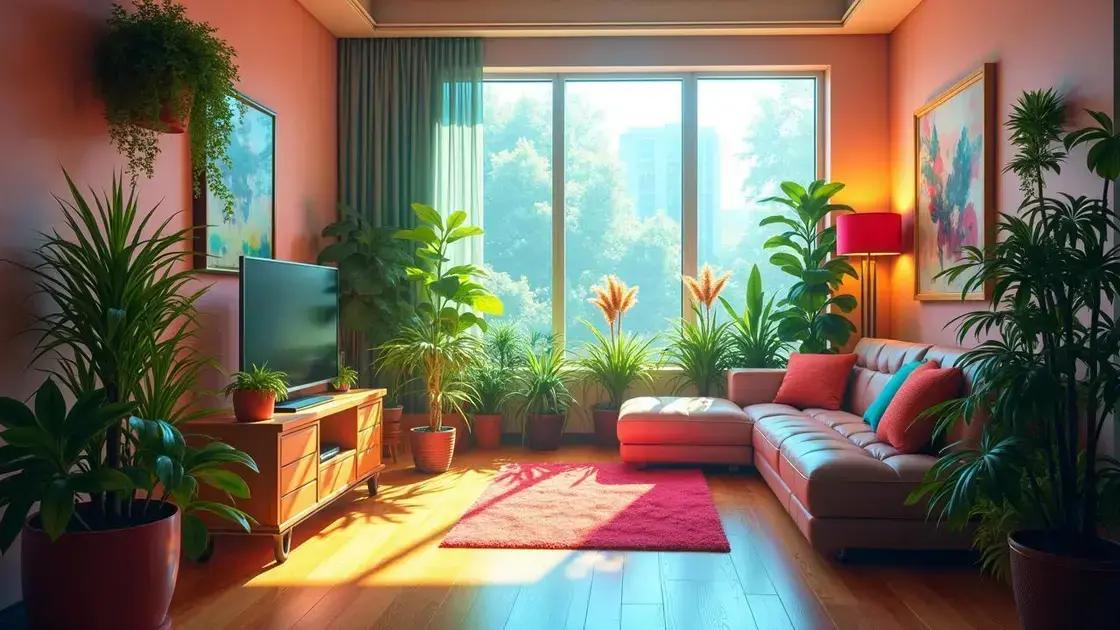How to Take Care of Plants: 7 Secrets to Thriving Indoor Greenery
How to take care of plants can seem challenging, but it doesn’t have to be. Understanding the basics can transform your indoor space into a lush oasis. From watering schedules to sunlight needs, knowing what your leafy companions require is vital for their growth. Ready to uncover the secrets of thriving plants? Dive into the essential techniques!
Table of Contents
ToggleEssential watering techniques for healthy plants
How to take care of plants effectively begins with understanding the essential watering techniques that promote healthy growth. Watering is crucial for the wellbeing of your indoor plants, influencing their overall health and vibrancy. Here’s a deep dive into the effective watering practices to ensure your green companions thrive.
1. Understanding the watering needs of your plants
Different plants have varying watering requirements. Knowledge of these needs is vital:
- Cacti and succulents require less frequent watering due to their water-storing capability.
- Tropical plants like ferns thrive on consistent moisture and may need more regular watering.
- Always check the species-specific requirements for your plants to tailor your care.
2. Implementing the right watering techniques
Here are key techniques to enhance your watering routine:
- Watering deeply: Ensure that water penetrates the root zone to promote strong root development.
- Checking soil moisture: Use a moisture meter or your finger to assess if the soil is dry before watering.
- Avoiding overwatering: Be cautious; soggy soil can lead to root rot. Only water when necessary.
3. Best practices for scheduling watering
Consistency is key to plant health. Follow these practices:
- Establish a routine—typically every one to two weeks, depending on the plant’s needs.
- Adjust your schedule based on seasonal changes; plants often need less water in winter.
- Consider grouping plants with similar watering needs together for convenience.
4. Monitoring plant health
Regularly observing your plants can provide vital cues about their watering needs:
- If leaves are yellowing, the plant may be overwatered.
- Brown tips can indicate underwatering or insufficient humidity.
- Healthy foliage typically signifies proper hydration.
For more tips on exploring indoor gardening techniques, keep reading!
5. Frequently asked questions about watering plants
- How often should I water my plants?
Watering frequency varies by species. Regularly check the soil moisture to guide your routine. - Can I use tap water for my plants?
Tap water is generally suitable, but let it sit out for 24 hours to dissipate chlorine if concerned.
By mastering these essential watering techniques, you can confidently provide the best care for your beloved houseplants, securing their health and growth.
Optimal sunlight exposure for indoor plants

Optimal sunlight exposure for indoor plants plays a vital role in their health and growth. Understanding your plants’ light needs is key to creating a thriving indoor environment. Here are effective strategies to ensure your greenery receives the light it requires.
1. Identifying the light preferences of different plants
Different indoor plants thrive in varying light conditions. Recognizing these needs will help you position them effectively:
- Low light plants: Snake plants and pothos enjoy indirect light and can survive in lower conditions.
- Medium light plants: Spider plants and peace lilies thrive in bright, filtered light.
- High light plants: Succulents and cacti require direct sunlight and should be placed near windows.
2. Assessing your home’s lighting conditions
Understanding the light levels in your home is essential for optimal plant placement:
- North-facing windows: This offers the least direct sunlight, ideal for low-light plants.
- East-facing windows: Provide gentle morning sunlight, suitable for medium-light plants.
- South-facing windows: They receive the most sun exposure, perfect for sun-loving plants.
- West-facing windows: Afternoon sunlight is intense, benefiting plants that require high light levels.
3. Leveraging artificial lighting
When natural light is insufficient, consider additional lighting options:
- Grow lights: These simulate sunlight and can be placed above or around your plants.
- Fluorescent lights: Suitable for low-light plants, providing adequate brightness and energy efficiency.
- LED lights: Highly energy-efficient and can be adjusted for different plants based on their light needs.
4. Tips for maximizing light exposure
Follow these tips to optimize light for your indoor plants:
- Rotate your plants regularly to ensure even light distribution.
- Clean surrounding windows and leaves to remove dust that can block light.
- Adjust curtains or shades to modify light exposure based on the time of year.
5. Frequently asked questions about sunlight exposure
- How much sunlight do indoor plants need?
Most indoor plants need at least a few hours of indirect light per day, but specific requirements vary by species. - Can too much sunlight harm my indoor plants?
Yes, excessive direct sunlight can scorch leaves, especially for low-light plants.
For more insights, consider exploring indoor gardening techniques to enhance your skills.
By implementing these strategies for optimal sunlight exposure, you can ensure that your indoor plants flourish and remain healthy.
Top tips for maintaining plant health and vitality
Top tips for maintaining plant health and vitality should be a priority for any indoor gardener. Healthy plants not only brighten your home but also improve air quality and create a soothing environment. Here are essential strategies to keep your plants thriving.
1. Regularly monitor plant health
Observing your plants is crucial for detecting issues early:
- Check leaves for discoloration, spots, or wilting.
- Inspect the soil for dryness or over-saturation.
- Assess the overall growth pattern—stunted growth can indicate a problem.
2. Provide proper nutrition
A well-balanced diet is essential for plant vitality, which can include:
- Fertilization: Use a nutrient-rich fertilizer during the growing season—typically spring and summer—to boost growth.
- Organic options: Consider compost or organic fertilizers for a natural approach.
- Special formulas: Tailor fertilizers to specific plant needs (e.g., succulent vs. leafy plants).
3. Maintain optimal humidity levels
Indoor humidity can significantly impact plant health:
- Most tropical plants prefer humidity levels of 40-60%.
- Use a humidifier to maintain moisture in dry environments.
- Group plants together to create a micro-humidity environment.
4. Prune regularly for growth
Proper pruning encourages new growth and keeps plants looking their best:
- Remove dead or yellowing leaves to enhance plant appearance.
- Trim overgrown areas to allow sunlight to reach all parts of the plant.
- Make clean cuts with sharp tools to minimize stress on the plant.
5. Frequently asked questions about plant health
- How often should I check my plants for health?
Regular checks should be conducted weekly to catch any issues early. - What are the signs of over-fertilization?
Yellowing leaves, burnt tips, and stunted growth are common indicators.
For further insights, consider exploring indoor gardening techniques that can enhance your plant care skills.
By implementing these top tips for maintaining plant health and vitality, you can ensure your indoor plants flourish beautifully.
In conclusion
Maintaining the health and vitality of indoor plants requires consistent attention and proper care techniques. By implementing essential watering strategies, optimizing sunlight exposure, and following key maintenance tips, your indoor plants can thrive beautifully. Remember that each plant has its unique needs, and regular observation will help you understand them better. For further guidance, check out these tips on enhancing your indoor garden to continue your plant care journey with confidence.

